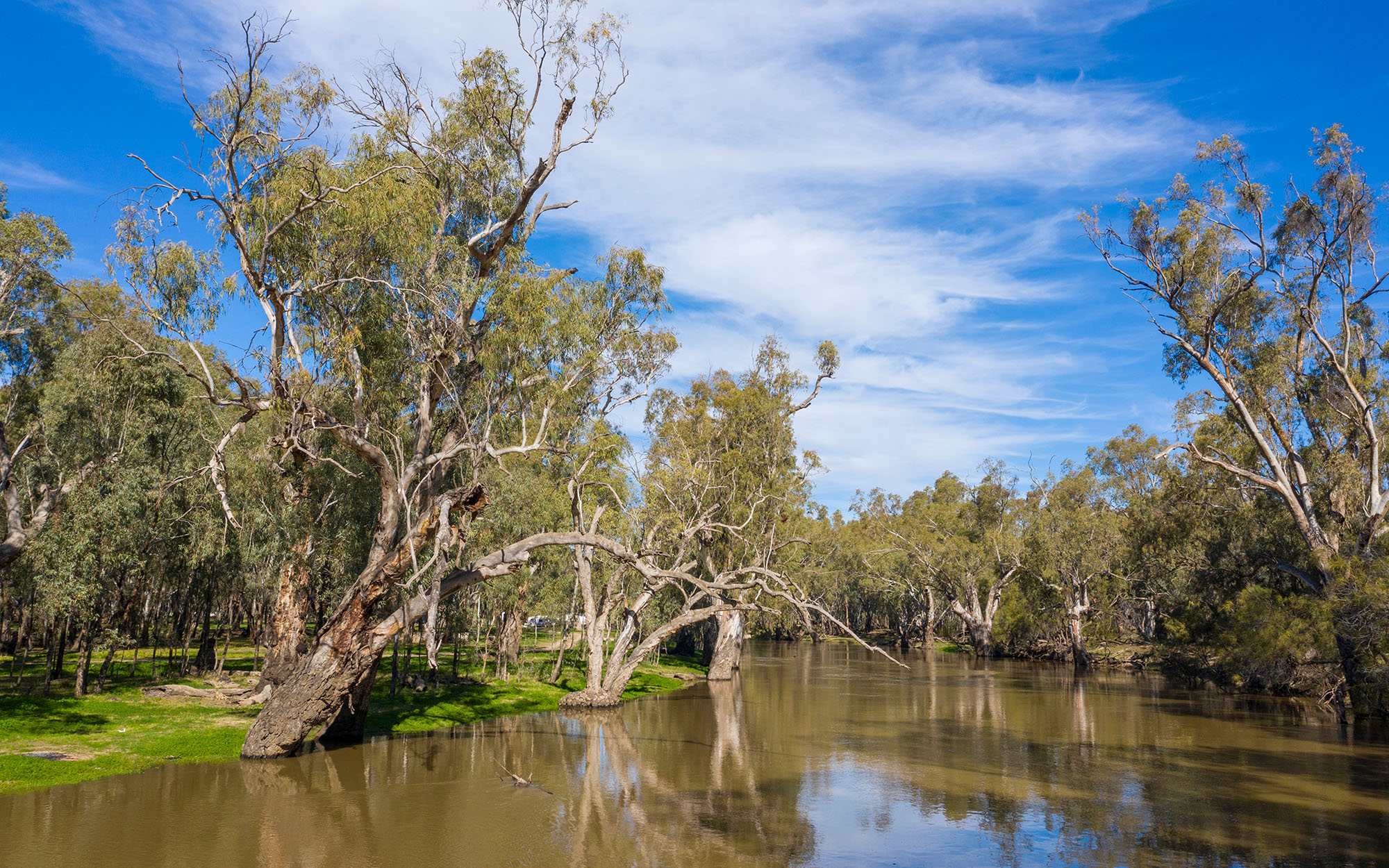About the Lachlan
Located in central NSW and west of the Great Dividing Range, the Lachlan catchment borders the Murrumbidgee catchment to the south and the Darling catchment to the north.
The Lachlan catchment occupies an area of around 90,000 square kilometres. Its landscape varies markedly from east to west as it moves from the headwaters and tablelands through the slope of the middle catchment to the flat western plains.
Because of the variable landscape, the Lachlan catchment contains a broad range of different environments. Ecosystems in the region include temperate forests, woodlands and grasslands of the east, and the semi-arid woodlands, mallee and shrublands of the west. This range of native vegetation makes up 40 per cent of the catchment.
Rivers and tributaries
The Lachlan River rises near Gunning and travels approximately 1,400 kilometres to its junction with the Murrumbidgee River. Nearly 1,300 kilometres of its total length is regulated.
Very little water from the Lachlan River reaches the Murrumbidgee except during major floods. Most is taken up by water users or provides inflows to the wetlands in the lower Lachlan, particularly the Great Cumbung Swamp.
Water storages
Wyangala Dam is the main regulating storage in the Lachlan catchment with a capacity of 1.22 million megalitres. It provides a regulated water source for irrigators and towns along the Lachlan River.
Several natural lakes have also been modified for use as storages, the largest of which is Lake Cargelligo at 36,000 megalitres, and Lake Brewster at 154,000 megalitres.
Carcoar Dam, at 35,800 megalitres, is a relatively small storage on the Belubula River and supplies water for irrigation, stock and domestic use within the Belubula valley.
Towns
Major rural centres drawing their water from the Lachlan catchment are Cowra, Parkes, Forbes and Young. Smaller towns in the catchment include Crookwell, Grenfell, West Wyalong, Condobolin, Hillston and Lake Cargelligo.
Water users
Major water users are local councils, water utilities, mining and agriculture, including dairy, wool, beef and lamb, as well as irrigated crops such as cereals, lucerne and cotton.
Land use in the Lachlan catchment is dominated by extensive agriculture with 75 per cent of the catchment used for livestock grazing and 15 per cent for dryland cropping.
There are several wetlands within the Lachlan catchment with national significance, particularly as waterbird habitat. Nine of these wetlands, including Lake Cowal near Forbes, Lake Brewster, Booligal wetlands and the Great Cumbung Swamp, feature in the Directory of Important Wetlands in Australia.
Sharing water between productive and environmental use is a key issue in the Lachlan, as it is across most of the Murray-Darling Basin.
The alteration of natural river flows through the construction of dams and weirs, and erosion from land clearing affect riverine health and contribute to water quality problems, such as salinity.
